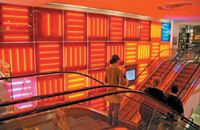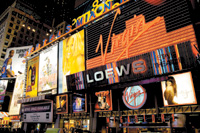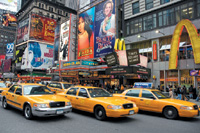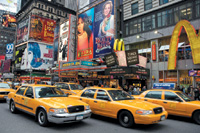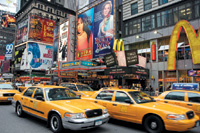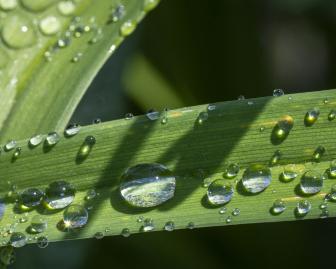Nikon D70 Digital SLR Camera; An Incredibly Fast 6 Megapixel D-SLR
· 6.1 megapixel · $999 · USB 1.1 and 2 compatible · Feels like a 35mm camera Further Information The second digital SLR to
break the $1000 price barrier, the Nikon D70 costs $500 less than the
Nikon D100 and employs the same autofocus module and a similar 6.1 megapixel
CCD sensor. That has led some photographers to conclude that the D70
must be a "stripped down" model. In truth, the newer camera
boasts an improved processor and buffer (temporary storage bank) and
offers several other advantages. These include 7 extra Program modes,
more sophisticated Matrix metering, much faster flash sync speed, more
options for adjusting certain image parameters plus a greater burst
of depth for capturing a long series |
|||||
Primary Features And
Operation |
|||||
The D70 is also great for continuous
shooting. A new Dynamic Buffer plus an improved LSI processing engine
make the camera faster than most other non professional D-SLRs and highly
competitive with many 35mm models. In continuous framing, you can shoot
a dozen full resolution JPEG Fine images in 4 seconds. Want to make an
even longer series of frames? Buy a high-speed CompactFlash card --such
as the 1GB SanDisk Ultra II or Lexar 80x Pro--and you can take up
to 144 shots in a sequence. (In raw capture, only four images can be made
in a single burst.) |
|||||
Image Quality Issues |
|||||
|
|||||
Final Evaluation |
|||||
A long time "eDP" and "Shutterbug" contributor and free-lance stock photographer, Peter K. Burian is the author of "Mastering Digital Photography and Imaging" (Sybex, 2004) a 270 page book that provides a great deal of practical advice on all aspects of the topic. PROS CONS |
|||||
Facts |
|||||
· Light Metering: 3D
Color Matrix, 1005 pixel RGB sensor; center-weighted with adjustable area;
spot metering (1 percent of frame); AE Lock, Exposure Compensation and
Bracketing |
- Log in or register to post comments


